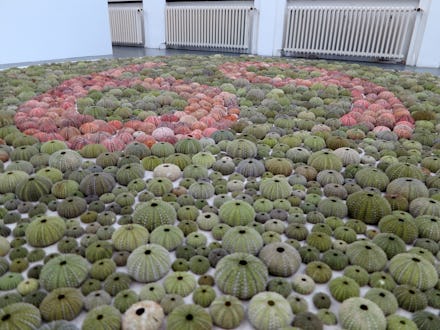These GIFs will show you what it's like to be colorblind

It's hard to imagine any form of color blindness, a common condition that causes an inability or reduced ability to distinguish colors, unless you're literally seeing through the eyes of someone who's colorblind. Sometimes color blindness means the world looks like it's in black and white — but the condition is more complicated, and diverse, than that.
To show the different types of color blindness, a team from Clinic Compare in the U.K. has created a set of GIFs that compare and contrast the ways the visual impairment can affect daily vision.
Blue cone monochromacy
BCM is a rare genetic condition that almost exclusively affects males — and even then, it only occurs in about 1 in every 100,000 people, according to the BCM Families Foundation. From birth, people with BCM experience trouble distinguishing colors, and, by Clinic Compare's portrayal, see colors as duller than they are.
Tritanopia
Tritanopia, or blue blindness, is the very rare inability to tell the difference between blue and yellow colors, thanks to missing S-cones. People with the condition can still see reds and greens.
Tritanomaly
Tritanomaly, or blue weakness, is extremely rare and causes the eyes to not pick up blues and yellows as sharply. It's similar to tritanopia in that it affects blues and yellows; but unlike tritanopia, it involves a mutation of the S-cones of the eyes — not a complete absence of them. With tritanomaly, blues and yellows are viewed duller than usual.
Deuteranopia
Men with deuteranopia, or red-green color blindness, don't have any working green color cones in their eyes. Because of that, they see reds as a brownish yellow and green as beige.
A Reddit user who identifies as a deuteranope — someone who only sees two or three color hues — responded to a thread about what colors look like to people with color blindness. Here's how the redditor interpreted a photo:
Deuteranomaly
Deuteranomaly, like tritanomaly, is the decreased effectiveness — not complete absence — of the green cones that dictate color perception. In this case, red-green vision is skewed. Only, in the case of deuteranomaly, green sensitivity leans toward the red spectrum, giving the effect of a green hue where there would normally be deeper red tones. It's the most common form of color blindness, affecting 5% of males.
Achromatopsia
Achromatopsia, or monochromacy, is the black-and-white effect. People with the complete form of the condition can only see in black, white and gray. In milder cases, people can pick out some colors.
"Honestly I miss out on the dumbest things but it gets to me," one Reddit user wrote in a thread about having achromatopsia. "Like that dress that people were saying was blue and black or white and gold? I was like, 'It's... Um, gray and darker gray?'"
Protanopia
Protanopia just makes the world look more green, since the condition makes people less sensitive to red light. It's caused by missing L-cones, meaning it's hard to tell the difference between blue and green and red and green.
"I suspected I was [colorblind] because I would always draw purple and red skies when I was in school," Reddit user SeanAdkins2012 wrote in a thread about discovering he had protanopia. "I guess people thought I was trying to make an artistic sky, but I was just drawing normal skies. I also would argue about car colors because my girlfriend would say, 'That's such a nice purple car!' I would argue that it's blue. After going to the doctor for my nearsightedness, not colorblindness, that's how I found out that I have protanopia."
Protanomaly
Protanomaly is the less-severe version of protanopia, meaning, instead of missing L-cones, the cones are just defective. The result is difficulty distinguishing between blue and green and red and green, but to a milder degree.
The GIFs illustrate that color blindness isn't just one thing, but a wide variety of mutations and deficiencies that change people's perceptions of the world.